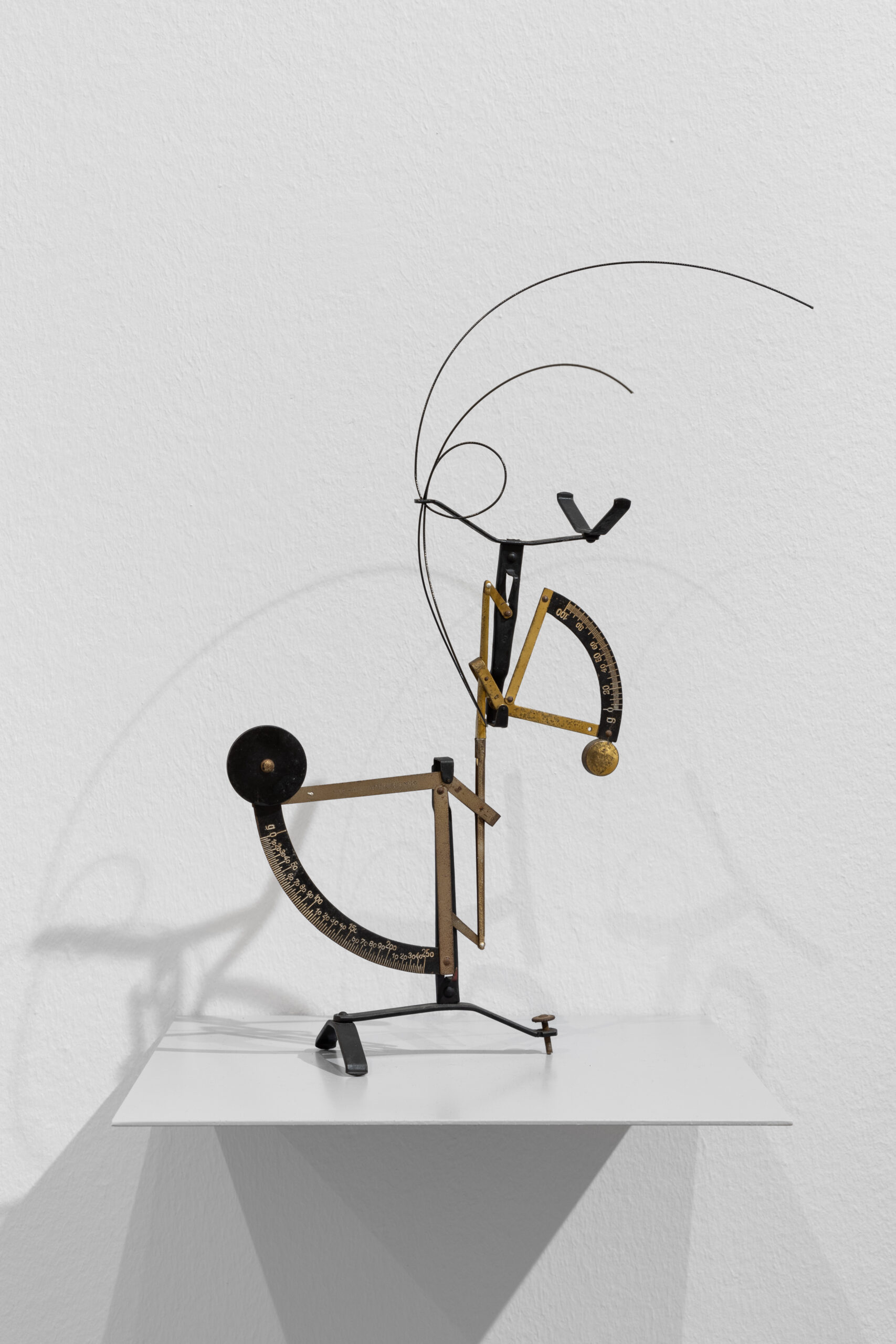Louva-a-Deus
Em Louva-a-Deus, o artista subverte a função original de duas balanças de correspondência, leitmotiv frequente no seu trabalho. Ao desmontar e remontar os seus pés e pesos, surge uma figura cujo morfismo parecemos reconhecer, particularmente quando rematada com a intervenção de um cabo de aço que se contorce para fora do seu corpo – anunciando o estranho esqueleto e comportamento de um Louva-a-Deus.
Como se de uma fêmea se tratasse, apenas na fragmentação das partes se consolida a união do objeto. Pois, se apenas matando e ingerindo o seu parceiro após o ato sexual garantem a sobrevivência dos seus ovos, também estas ferramentas, abaladas e absolutas, se devoram unindo-se para a materialização de um novo objeto – diríamos até um novo tipo de existência – que se balança entre o amor e a morte.
In Louva-a-Deus (Mantis Religiosa), the artist subverts the original function of two correspondence scales, a frequent leitmotif in his work. By dismantling and reassembling their foundations and weights, a figure whose morphism we seem to recognise emerges, particularly when pronounced with the intervention of a steel cable that twists out of its body – announcing the strange skeleton and behaviour of a mantis.
As if it were a female, only in the fragmentation of the parts is the unity of the object consolidated. For if only by killing and ingesting their partner after sex do they guarantee the survival of their eggs, these tools too, shaken and obsolete, devour each other, uniting for the materialisation of a new object – we could even say a new type of existence – that balances between love and death.
Eva Mendes
